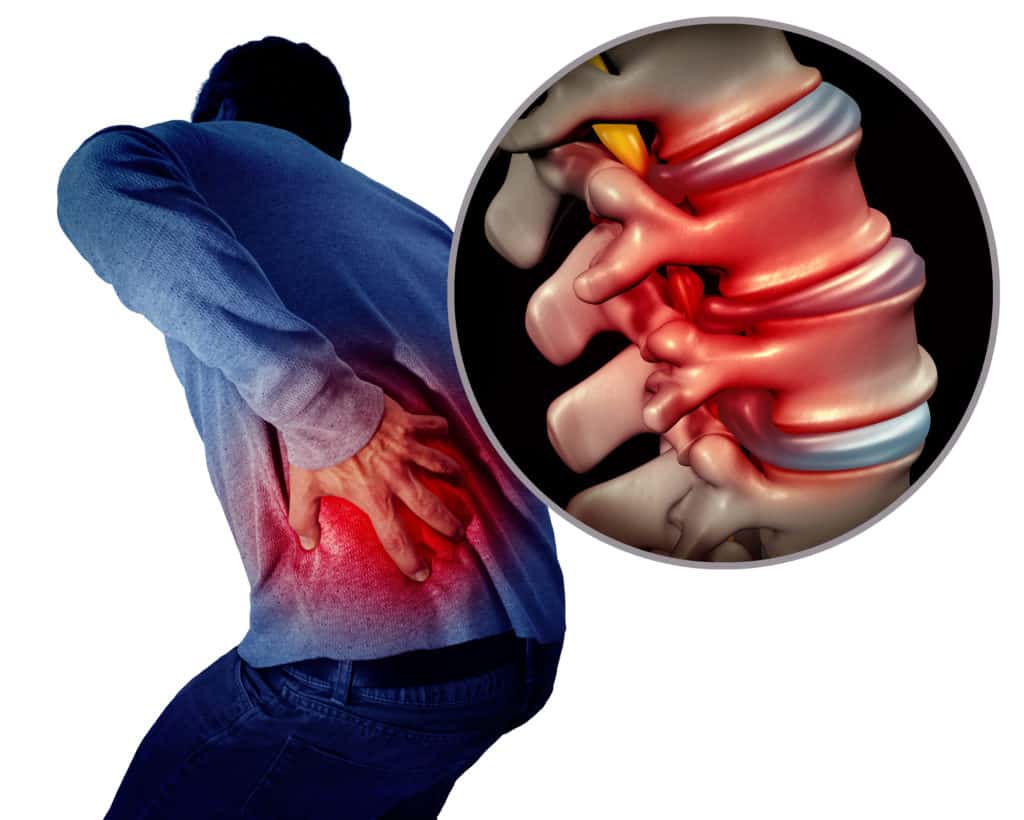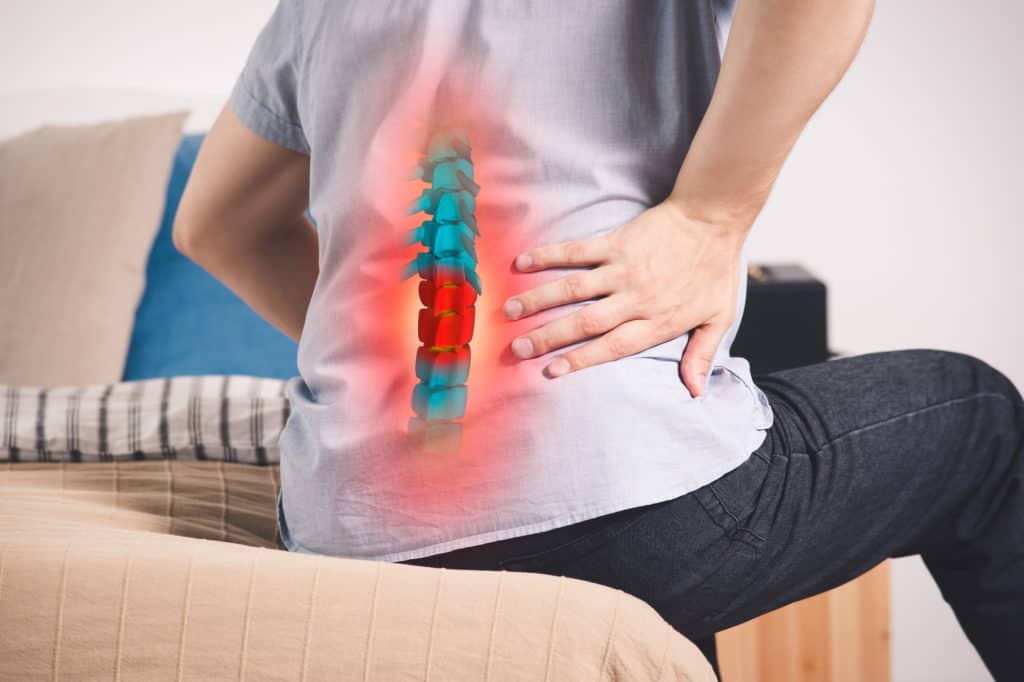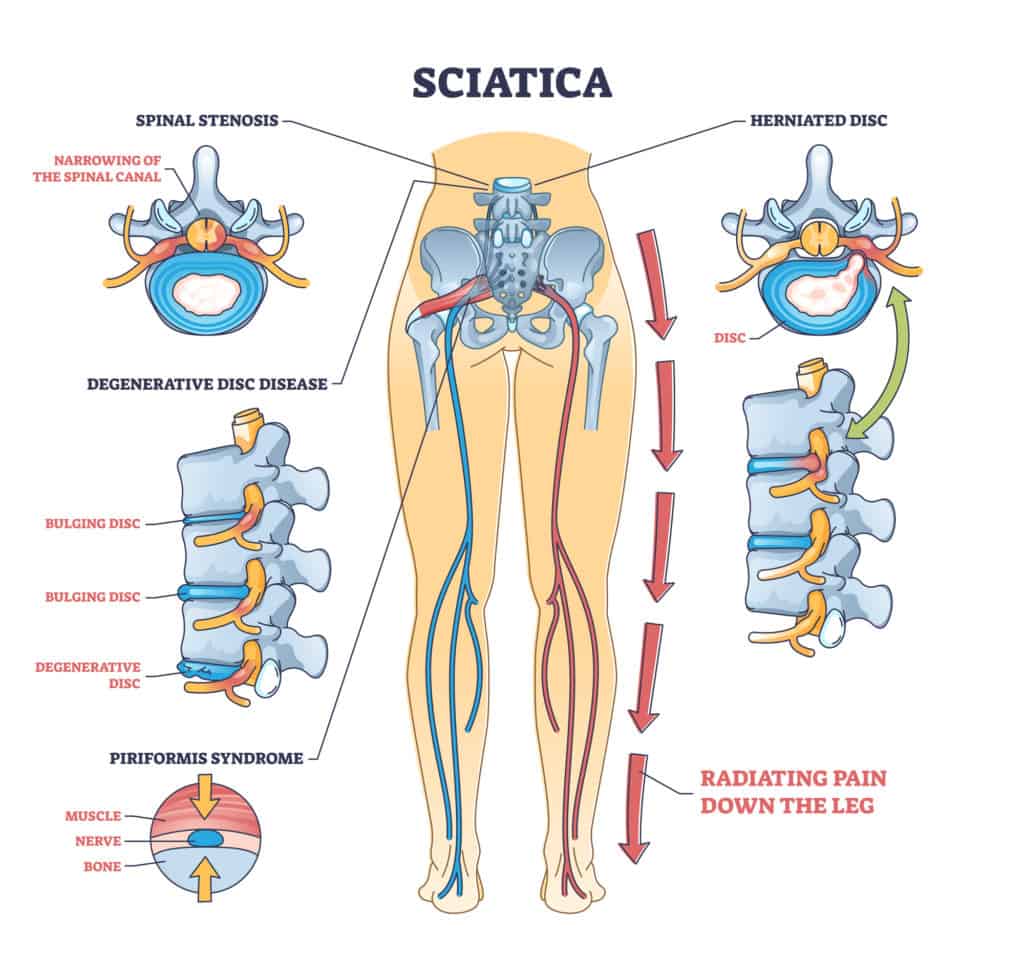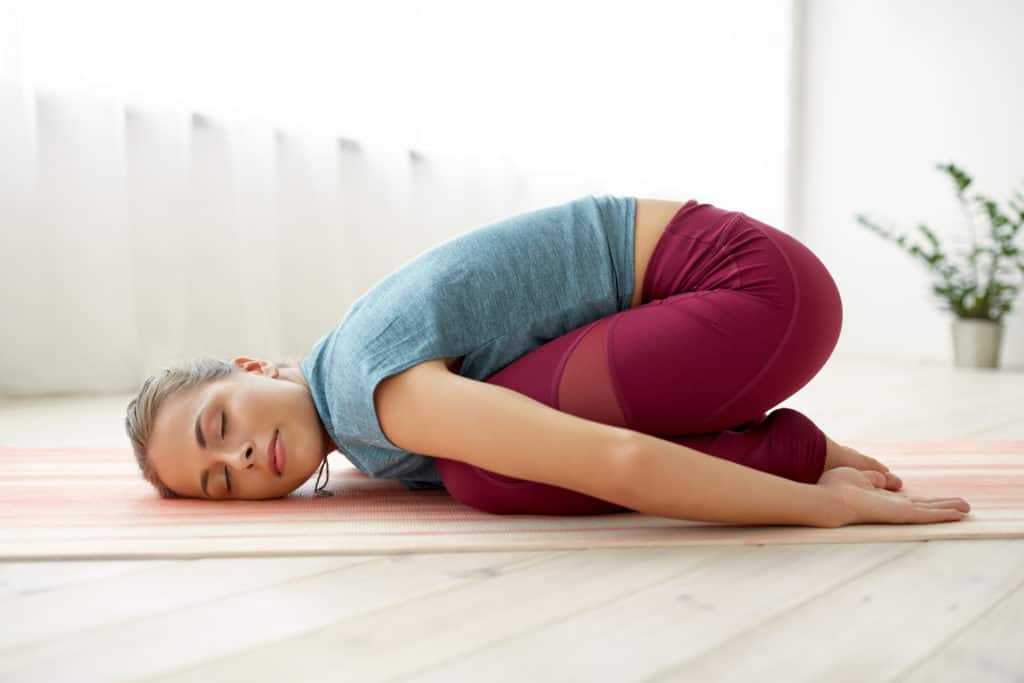
We’ll share some excellent exercises you can do to improve the symptoms of sciatica later in the blog, but first, let’s examine what sciatica is and what causes it, so you can understand the condition and why you might have it.
We know that the root cause of sciatica pain is a compressed, pinched, or inflamed nerve in the lower back region.
The most common reason people develop this condition is a slipped or herniated disc that causes a buildup of pressure at the nerve root.
Sometimes, the pain gets better on its own. However, in most cases, treatment from a physical therapist is necessary to reduce the often-intense pain and speed up recovery.
More Blogs From RPM Physical Therapy:
What Is Causing My Upper Back Pain?
But what exactly is going on underneath the hood?
Well, in simple terms, when the sciatic nerve experiences irritation or injury, we refer to this pain as “sciatica.”
The sciatic nerve is the thickest and longest in the human body. It comprises 5-nerve roots, with two originating from the lumbar (lower) spine and the other three starting from the sacrum (the tailbone).
These five roots combine to create a left and right sciatic nerve. The sciatic nerve passes through the buttocks, hips, and down the leg ending beneath the knee, on either side of the body.
The nerve further spreads into other nerve connections that travel into the feet and toes.
Actual injury to the sciatic nerve rarely happens because it is deep within the body. However, we use “sciatica” to describe pain that begins in the lower back and travels down the leg.
As we mentioned, the pain is usually caused due to some form of inflammation, compression, irritation, or pinching of a nerve in the lower back region from some form of injury or underlying medical condition.
What Are The Symptoms Of Sciatica?

When we see patients with sciatica, they usually present with mild to intense pain along the sciatic nerve route.
In most cases, the pain runs from the lower back, traveling right down the hips and buttocks, and ending in the legs.
Other symptoms of the condition can include weakness in the foot and leg muscles, a tingling sensation, and an unpleasant pins-and-needles feeling in the toes and foot.
However, the descriptions we hear from patients on what sciatica feels like differs based on the individual cause of their sciatica, which varies widely.
Some patients experience sciatica as intense pain, and others describe it as a burning sensation.
The pain may ebb and flow from time to time for some people and be constant for others. In most patients, the pain is more intense in the leg than in the lower back region.
It can also increase if you stand or sit for too long or if the upper body is twisted while standing. Any sudden movement, like a sneeze, can also worsen the pain.
Frequently Asked Questions About Sciatica
Q: Does sciatica impact both legs?
A: In most patients, sciatica occurs in a single leg. Although, it may happen in both legs depending on where the nerve is compressed along the spinal column.
Q: Does sciatica develop gradually or come on suddenly?
A: It may occur gradually or suddenly, depending on its cause. For example, when it is due to arthritis, it takes time to develop slowly, and a herniated disk can happen suddenly.
Q: Is sciatica common?
A: Sciatica is among the more common causes of back pain in the US, with around 40% of the population experiencing sciatica-related back pain at some stage.
Q: Who is at higher risk for sciatica?
The following factors can increase your risk of developing sciatica:

- Injury: Any injury to the spine or lower back increases your risk level.
- Aging: is another factor that can increase your risk because it can cause wear and tear of the disks and weakening of the bones in the spinal column. This weakening increases the possibility of injuring the sciatic nerve because of changes in the ligaments, discs, and bones.
- Obesity: We can compare the spine to a lift, with the bones and muscles in the spinal column bearing the body’s weight. So, the greater the weight in front of the body, especially around the midsection, the more weight there is on the spinal column and the back muscles – especially in the lower back, which causes strains and slipped disks.
- A weak core: The “core” consists of the abdomen and back muscles. Having a solid core region is critical for lower back support. If your core muscles are weak, they do not provide sufficient support to the lower back and increase the risk of injury, which can result in sciatica.
- Carrying heavy weights: If you work in a profession where you need to carry weights, you have an increased risk of developing sciatica and other lower back conditions. However, it’s not a given. We can educate you on preventing sciatica and keeping your back healthy even if your job requires daily heavy lifting.
- Maintain the correct posture: Likewise, having weak muscles and/or poor posture while walking, sitting, or standing and when lifting weights increases your likelihood of developing sciatica or other back issues.
- Diabetes: Patients with Type II diabetes, especially those with poorly controlled disease, have an increased risk of developing sciatica.
- Osteoarthritis: Another possible cause of developing sciatica is osteoarthritis, as the degeneration it causes damages the spinal column’s bones.
- Sedentary lifestyle: If you’re primarily inactive and lead a sedentary lifestyle for an extended period, you can develop inflexibility and weaken your lower back muscles, resulting in sciatica.
- Smoking: We know that those who smoke have an increased risk of sciatica because the nicotine, other toxic chemicals, and lower oxygen levels weaken the bones, damages tissues, and hasten the degeneration of spinal disks.
Treatment Of Sciatica

Most people with sciatica take over-the-counter medications to try and fix the pain. These medications can reduce swelling and inflammation and relieve the pain in the short term.
But they do nothing to fix the root cause. So instead, we recommend avoiding them (and the negative health consequences) in favor of physical therapy for long-term symptom relief.
Sciatica treatment focuses on relieving symptoms and pain while restoring your mobility. In most cases, a combination of physical therapy, therapeutic stretching and strengthening exercises, and targeted rest (away from the gym and other strenuous activity) will fix the condition.
Physical therapy is one of the most effective non-surgical methods to treat sciatica symptoms.
We instruct and guide you through various customized movements and exercises that help decrease the pressure on your sciatic nerve – depending on whatever the specific cause is for you.
These movements also help build long-term strength and flexibility that prevents the symptoms from reoccurring.
The Best Exercises For Sciatica Pain

If you have intense pain and other debilitating symptoms of sciatica, like muscle weakness or numbness, we do not recommend trying to fix the symptoms at home or exercising without consulting a doctor or physical therapist first.
However, if your symptoms are mild, you can try the following exercises to help reduce your pain.
- Exercise 1: Knees to chest
Come down onto the floor and lie on your back with your feet on the floor and your knees at a 90-degree angle.
Then, slowly and gently lift and bring one of your knees to your chest while the other foot stays firmly planted on the floor.
Hold the knee at your chest for 30 seconds to 1 minute (as long as it feels comfortable to do so) before returning to the starting position and repeating on the other leg.
- Exercise 2: Child’s Pose
If you do yoga, you’ll recognize this one. Still, regardless of whether you’ve ever stepped on a yoga mat, it’s a great exercise to release stress and tension in the hips and lower back.
Start by kneeling on the floor in a “tabletop” position with your knees “hip width” apart, your back in a neutral position, and your hands on the floor directly underneath your shoulders.
Then push your hips backward onto your lower legs and rest here while taking deep, relaxing breaths.
Hold for as long as it feels good to do so, and repeat throughout the day whenever your lower back and/or hips feel tight and sore.
Stop all exercises immediately if you feel increased pain or other symptoms.
But again, it’s best to seek the help of a physical therapist to guide you through performing these exercises properly without the risk of further injury.
We offer a free 30-minute consultation. You can book yours here.
Dr. Jonathan Ruzicka is a Manual Therapist whose experience as a private therapist for professional athletes drove him to further his education attaining unparalleled skills in tissue mobility work, performance based rehab, injury prevention, myofacial release and joint mobilization to optimize human performance.
- 5 Lower Back Pain Stretches to Ease Your Discomfort - August 23, 2024
- How to Avoid Foot and Ankle Pain and Stay Active! - July 26, 2024
- Essential Stretches for Sciatica Pain: Your Path to Relief - June 10, 2024


